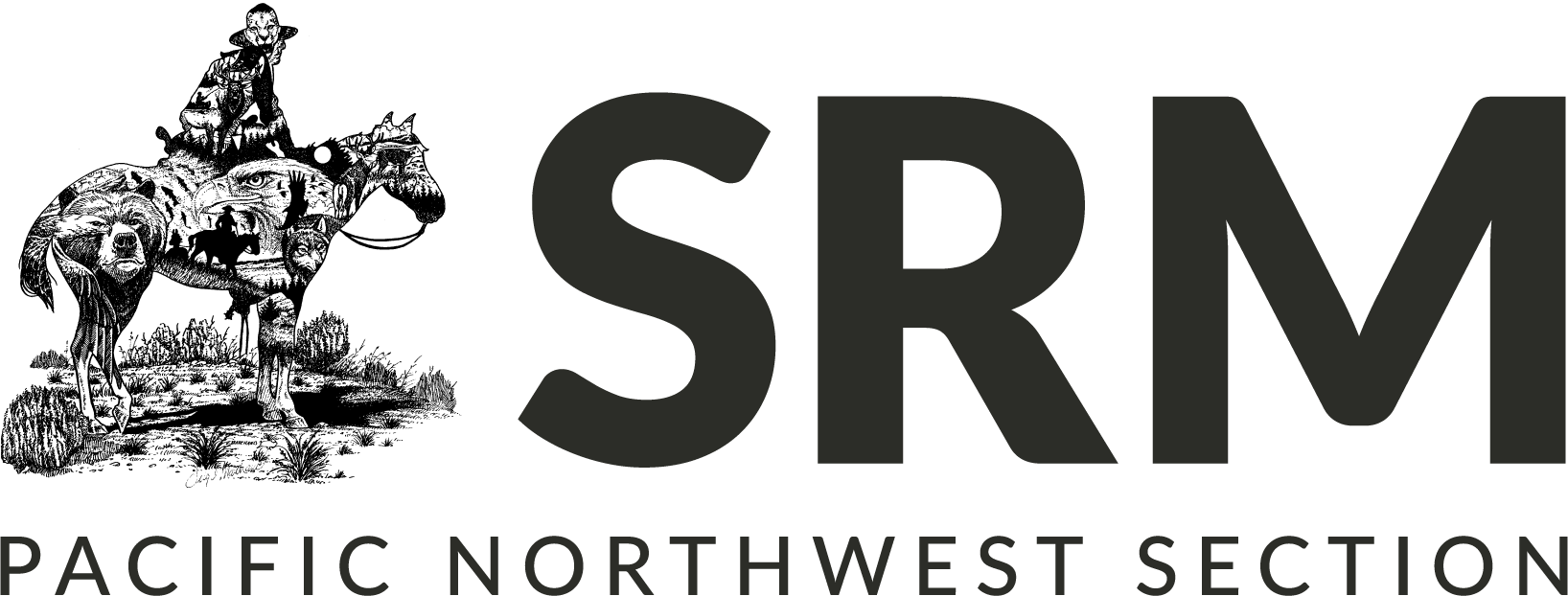Once again, the BC Chapter is hosting a webinar series to showcase projects and case studies of professionals and students in the field of Range Management within the PNW Section.
When: Tuesdays at 12 p.m. October 11, 18, 25; November 1, 8, 15
Zoom Presentations: Each 30 minute webinar will feature a 15 minute presentation followed by time for questions and discussions.
Registration is required in advance. Register here.
By email, you will receive a registration confirmation and instructions for joining the webinars.
| Date | Presenter | Title |
October 11 | Anabel Dombro | Containment/restoration of annual-bromegrass invaded northern prairie using the herbicide indaziflam |
| October 18 | Maddy Case | Drivers of annual grass invasion at local and regional scales |
| October 25 | Amanda Miller | Three Years of Targeted Grazing to Reduce Wildfire Risk |
| November 1 | Bob Gillaspy | Resistance and Resilience for Rangelands: What Do They Mean? |
| November 8 | Nick Hamilton | The Province of BC’s range ecologists; working for ecological and social landscapes in a time of rapid change |
| November 15 | Carlos Ochoa | The Hydrology of Western Juniper – Central, OR, USA. |
Abstracts
Containment/restoration of annual-bromegrass invaded northern prairie using the herbicide indaziflam.
Anabel Dombro, MSc Candidate, University of Alberta
Annual bromegrasses are prevalent weeds on North American rangeland and have particularly affected the Great Basin and southern Great Plains of the U.S. Annual brome has been found to change plant community structure and function, lowering desirable and overall forage production, negatively affecting mammal and bird habitat, and causing frequent fires. While the extent of annual brome on Canadian rangeland has not been documented in as much detail as the U.S., records indicate it is spreading into the northern Great Plains, leading to concerns about the future status of Canada’s mixedgrass prairie. Control of these invasive species is of interest to land managers when looking to improve or maintain rangeland function. Field trials at two locations in the dry mixedgrass prairie of southeast Alberta compared the effects of four rates of indaziflam (0, 40, 80 or 160 g ai ha-1) applied at two times (fall or spring) on annual-brome invaded native grassland. Biomass responses of brome and other vegetation were assessed over 3 years. Fall indaziflam treatment provided quicker control of brome than spring treatment. The lowest indaziflam rate, 37.5 g ai/ha was unreliable at controlling brome, while the recommended rate of 75 g ai/ha controlled brome biomass and density at both sites in both 2021 and 2022 when it was sprayed in the fall. Indaziflam was still providing significant brome control in the final year of the study, 2022, and in this year several treatments had zero brome density or biomass, indicating indaziflam’s potential for long-term control. Perennial grass biomass increased under one treatment rate. The project also looked at the effects of indaziflam on non-target native species with a field study and two greenhouse studies which looked at how indaziflam impacted native perennial grass root growth and the native perennial seed bank.
Drivers of annual grass invasion at local and regional scales.
Maddy Case, postdoctoral scholar in the Institute of Ecology and Evolution at the University of Oregon
This presentation will share results from a recent region-wide field survey of sagebrush rangelands in Oregon and Idaho, where we examined drivers of annual grass invasion at local and regional scales, and how grazing intensity at different scales can interact with environmental determinants of vegetation.
More information about my work can be found here: https://madeloncase.com/
Three Years of Targeted Grazing to Reduce Wildfire Risk
Amanda J. Miller, Rangeland Ecologist, M.Sc., P.Ag., Palouse Rangeland Consulting
This presentation will discuss a pilot project in partnership with the BC Cattlemen’s Association and the Province of British Columbia that uses cattle grazing to reduce wildfire risk in wildland-urban interface areas. Amanda Miller, of Palouse Rangeland Consulting is engaged as the liaison, coordinator, and researcher for the development, pilot, and testing of livestock use models for fine fuel management.
Resistance and Resilience for Rangelands: What Do They Mean?
Bob Gillaspy, Range Management Specialist
This presentation will discuss the following topics as they relate to rangelands:
- Resistance and Resilience are commonly used terms in discussions about agriculture and preparing for the future.
- Provide a common understanding of these terms as they apply to the ecology of grazed systems.
- Relationships between ecological resistance and resilience, disturbances, and ecological processes will be discussed.
The Province of BC’s range ecologists; working for ecological and social landscapes in a time of rapid change
Nick Hamilton, P.Ag, Rangeland Ecologist
This presentation will provide a summary on the work of the range ecologists with the Province of British Columbia (Nick Hamilton, Ian Campbell, and Eleanor Bassett). The previous generation of range ecologists worked primarily on the issue of overgrazing, with a lot of success and positive change. Although time is still devoted to that issue if needed, most of the work has shifted towards addressing the effects of climate change, wildfires, prescribed burning, and wildlife management. The projects usually have multiple goals, one of them being to (hopefully) support Indigenous land management in the future.
The Hydrology of Western Juniper – Central, OR, USA.
Carlos Ochoa, PhD, Ecohydrology Lab, Oregon State University
Dr. Carlos Ochoa’s research focuses on connections between ecohydrological processes and human interactions in an ever-changing climate. Dr. Ochoa has numerous research projects, one of which is a long term study in central Oregon that has provided critical information regarding vegetation and hydrology interactions in western juniper dominated landscapes. This presentation will discuss some of the learnings from Dr. Ochoa’s work on western juniper. For more information, please visit his website: https://ecohydrology.oregonstate.edu/
Download Schedule and Abstracts
- See previous year’s Home on the Range presentations on BC Chapter’s YouTube channel
- Inquiries? Contact BC Chapter


